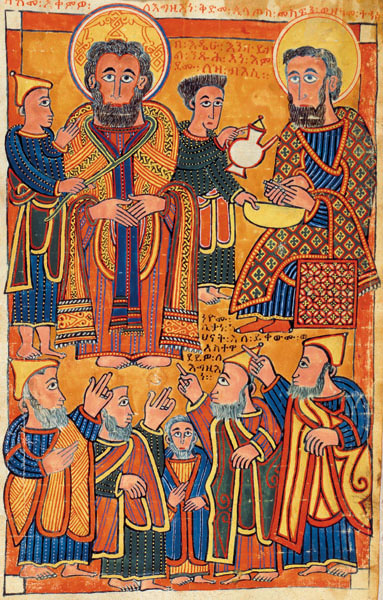Image Details

Photo by Malcolm Varon, NY
By washing his hands, Pilate (upper right) shows that he will not have the blood of Jesus (upper left) on them, even though an angry mob (below) demands Jesus be put to death, in this illuminated frontispiece from a 15th-century Ethiopian collection of biblical passages and homilies to be read during Passion Week. The North African Coptic and Ethiopic churches, as well as the Greek Orthodox church, made Pilate a saint for upholding Jesus’ innocence. In this miniature, both Pilate and Jesus have haloes that show their holiness.
In the second and third centuries C.E., Pilate became the subject of legends and stories—even an apocryphal Acts of Pilate—that depicted him as a Christian convert and martyr, ordered by the Roman emperor Caligula to commit suicide for his faith. These stories of Pilate’s piety and benevolence don’t mesh with what we know about him from history, but they strongly influenced early Christian art.
